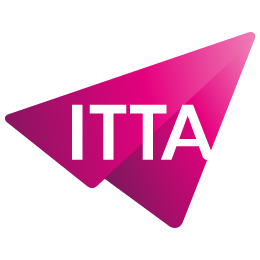Home > Trainings > Soft Skills > Team and People Management > Agile and Collaborative Team Dynamics
In a constantly evolving professional landscape, the success of any project depends on a team’s ability to adapt quickly and collaborate effectively. Adopting an agile team dynamic enhances cohesion, streamlines communication, and increases collective engagement. This training provides a practical, human-centered approach to building a more flexible, results-oriented, and collaboration-driven team environment. It is designed for anyone looking to strengthen collective performance while creating a motivating and structured workplace.
An agile team is not just about applying methodologies. It is based on a mindset that promotes trust, open communication, and the ability to solve challenges together. This training helps you understand the key factors that influence team dynamics and implement engaging practices that encourage active participation from every member. You will discover proven methods to boost your team’s responsiveness and create an energizing and collaborative work climate.
Module 1: Understanding Team Dynamics
Module 2: Strengthening Trust and Cohesion
Module 3: Discovering Agile Practices
Module 4: Optimizing Communication
Module 5: Leveraging Collective Intelligence
Module 6: Establishing a Sustainable Collaborative Culture
In today’s organizations, the ability to adapt quickly is no longer an advantage but a necessity. Companies must respond to frequent changes, adjust their processes, and maximize collective performance. This is where the agile team plays a key role. This approach transforms the way people collaborate by emphasizing flexibility, transparency, and shared commitment. An agile team is not an autonomous group without structure. On the contrary, it relies on clear roles, structured rituals, and common objectives. This framework promotes collective responsibility and reduces organizational silos.
Team collaboration is based as much on human dynamics as on methodology. Trust is a central element. Without trust, ideas do not flow freely and decisions are delayed. Mutual respect, clarity of each member’s role, and recognition of everyone’s expertise contribute to a culture where each individual is actively engaged. Agile methods support this framework by fostering a dynamic built on continuous improvement, adaptability, and co-creation of solutions. This model leads to better outcomes while reducing internal tensions.
Agility is not just a project management method. It represents a cultural approach where the team becomes a driver of innovation. Thanks to short cycles and regular adjustments, team members can identify blockers more quickly. This process encourages fast decision-making based on facts rather than assumptions. Performance no longer depends on a single individual but on collective dynamics. Each member is encouraged to actively contribute, which boosts autonomy, motivation, and a sense of ownership.
Effective communication in an agile team is not limited to daily interactions but relies on structured rituals. These moments are designed to align priorities, adjust actions, and resolve issues. They create a safe space where everyone can express ideas, ask questions, or propose alternatives. This structured communication reduces misunderstandings, improves responsiveness, and strengthens team cohesion. It also enables constructive conflict resolution, fostering progress rather than confrontation.
Collective intelligence turns challenges into opportunities. When a team adopts collaborative methods, it generates richer and more relevant ideas than any individual could alone. Co-creation workshops, rapid ideation sessions, and innovation techniques help generate practical, creative solutions. This dynamic is especially valuable in complex environments. By leveraging the skills and perspectives of each member, the team becomes more capable of solving new challenges efficiently.
Developing an agile culture cannot be limited to temporary practices. It must be embedded over time. This involves defining shared values, establishing common frameworks, and integrating collaborative behaviors into daily activities. A sustainable collaborative culture is based on commitment, transparency, and continuous improvement. It encourages every team member to actively participate in the decision-making process and share outcomes, strengthening engagement and collective motivation.
Adopting an agile team structure helps optimize time, improve deliverable quality, and increase stakeholder satisfaction. Organizations experience greater adaptability to unexpected changes, a reduction in internal conflicts, and stronger employee engagement. Additionally, this approach supports ongoing skill development, creating a positive cycle of performance and innovation. Collaboration within a team becomes a strategic advantage.
What is the difference between an agile team and a traditional team?
An agile team works in short cycles, makes decisions collectively, and adapts continuously. A traditional team follows a fixed plan with limited flexibility.
Is this training suitable for beginners?
Yes, it is designed for anyone looking to improve team collaboration. No technical prerequisites are required.
What are the tangible benefits for an organization?
Benefits include greater responsiveness, improved communication, reduced conflict, and enhanced overall performance.
Are agile methods applicable outside the IT sector?
Yes, agile principles can be applied in any industry where collaboration and adaptability are essential.
How can I tell if my team is ready for an agile approach?
A team that is open to change, motivated by continuous improvement, and willing to collaborate is ready to adopt an agile mindset.

Nous utilisons des cookies afin de vous garantir une expérience de navigation fluide, agréable et entièrement sécurisée sur notre site. Ces cookies nous permettent d’analyser et d’améliorer nos services en continu, afin de mieux répondre à vos attentes.
Monday to Friday
8:30 AM to 6:00 PM
Tel. 058 307 73 00
ITTA
Route des jeunes 35
1227 Carouge, Suisse
Monday to Friday, from 8:30 am to 06:00 pm.